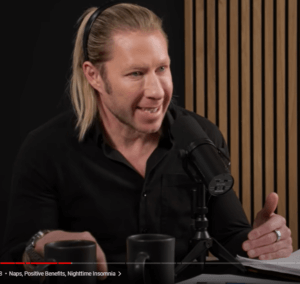
David Goggins: How to Build Immense Inner Strength
In a revealing podcast, Andrew Huberman speaks with David Goggins, a figure synonymous with resilience and mental toughness. Goggins discusses his journey from a challenging childhood to becoming a Navy SEAL and a renowned ultra-marathon runner. This blog delves into key insights from their conversation, highlighting Goggins’ approach to overcoming mental barriers and the scientific underpinnings of building willpower and inner strength.
Embracing Inner Dialogue and Self-Discipline
Goggins shares, “I knew my entire life was going to be a struggle, which is why I just ignored it. And I said, I’m not even trying to jump off any of this shit and learn how to read, how to write, how to memorize, how to become something I am not.” This stark honesty about his internal battles sheds light on the significance of self-talk in overcoming life’s hurdles. Goggins’ relentless self-discipline, born out of necessity, transforms his initial hopelessness into a powerful narrative of self-conquest.
Goggins emphasizes the transformative power of confronting one’s personal demons head-on, “I’m going to keep it real. So I’m not a real smart guy. And what I mean by that is I was born with ADD, ADHD. Like my brain cannot retain information.” His journey highlights the role of tenacity and an unwavering commitment to personal development, even when faced with inherent difficulties like learning disabilities. By continuously challenging himself to face uncomfortable truths and tackle seemingly insurmountable tasks, Goggins showcases how discipline can evolve into a form of liberation, freeing one from the confines of past limitations and self-doubt.
The Science of Willpower
Huberman adds a scientific layer to the conversation, discussing the anterior mid-cingulate cortex, a brain region associated with willpower. This area grows in response to performing tasks that are mentally challenging or undesirable, highlighting a neurological basis for the adage “what doesn’t kill you makes you stronger.” This scientific insight underscores the importance of continually challenging oneself to maintain and grow one’s mental fortitude.
Delving deeper into the neural mechanisms, Huberman elucidates how the anterior mid-cingulate cortex not only grows with challenge but is intricately connected to the dopamine reward system, traditionally associated with pleasure. However, in the context of overcoming adversity, dopamine release can also be triggered by pain and effort. This counterintuitive response reinforces behaviors that are fundamentally difficult yet beneficial, providing a biochemical incentive for pursuing strenuous activities. Essentially, engaging in tough challenges could biologically rewire our brains to not only endure but also to seek out and derive satisfaction from such demanding experiences, thus cultivating a more resilient and proactive mindset.
Transforming Pain into Progress
“It’s all stick. No carrot,” Goggins remarks, explaining that his drive comes not from seeking rewards but from pushing through pain and discomfort. His philosophy suggests that true growth stems from not just enduring but embracing the discomfort of personal challenges. This perspective is crucial for anyone looking to develop resilience—real progress often lies in what we least want to do but do regardless.
Goggins’ approach to discomfort and pain as catalysts for growth further exemplifies the concept of “post-traumatic growth,” where individuals not only recover but actually thrive following significant challenges. By actively choosing to confront and navigate through painful experiences, rather than avoiding them, one can forge a more profound sense of personal strength and achievement. This process of turning adversity into advantage is pivotal in Goggins’ life narrative, showing that the most challenging moments often provide the richest opportunities for personal development and self-discovery. His story is a testament to the idea that resilience can be significantly enhanced when we learn to perceive obstacles as opportunities to build character and inner strength.
Conclusion
David Goggins’ life story and insights, complemented by Andrew Huberman’s scientific explanations, offer profound lessons on building inner strength. It’s not about avoiding the storm but about learning to run through it. By understanding and applying these principles, one can forge a mindset geared towards overcoming any obstacle.





